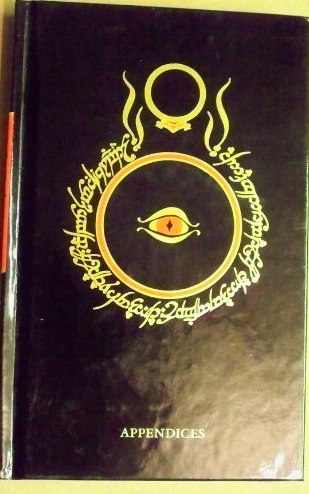
One of the most interesting things that our six "test" theses about
The Hobbit reveal is a remarkably consistent set of shared assumptions about children, literature, and "children's literature." Looking at all six, one can ask: what do we need to assume in order for these theses to be valid? Well, we must assume that
The Hobbit was written for children (1,2,3, and 6), that children prefer simple stories and characters (3), that children are wide-eyed and curious (2), that children's literature can and should instill a strong emotional response in children (6), and that children's literature should be didactic, i.e. that it convey important lessons (4), and that children's "agency" should be respected (1). And strikingly, nearly every one of these assumptions has been denounced with great eloquence by none other than J.R.R. Tolkien himself.
Tolkien's essay "On Fairy Stories," which was given as a lecture, revised as a printed article, and revised again for its ultimate appearance in published books, was written at a crucial moment between the completion of The Hobbit and the commencement of The Lord of the Rings. In one of the videos linked here on our blog, Tolkien alludes to this essay being inspired, in part, by the points his own children -- by this time, most of them on their way to young adulthood -- had made in response to Tolkien's own stories. These specific points come up in the section "Children," where Tolkien declares that
"among those who still have enough wisdom not to think fairy-stories pernicious, the common opinion seems to be that there is a natural connexion between the minds of children and fairy-stories, of the same order as the connexion between children's bodies and milk. I think this is an error; at best an error of false sentiment, and one that is therefore most often made by those who, for whatever private reason (such as childlessness), tend to think of children as a special kind of creature, almost a different race, rather than as normal, if immature, members of a particular family, and of the human family at large ... Children as a class—except in a common lack of experience they are not one—neither like fairy-stories more, nor understand them better than adults do; and no more than they like many other things. They are young and growing, and normally have keen appetites, so the fairy-stories as a rule go down well enough. But in fact only some children, and some adults, have any special taste for them; and when they have it, it is not exclusive, nor even necessarily dominant ... The value of fairy-stories is thus not, in my opinion, to be found by considering children in particular."
What adults think of as appropriate for children, in other words, is more often shaped by romanticized self-projections of their own childhood or an imagined ideal childhood, than by any endeavor to actually think critically about how children encounter texts. Children, in Tolkien's mind, are not necessarily more willing to "suspend disbelief"; indeed they may be more cautious about narratives than most adults. As he puts it,
"‘Is it true?’ is the great question children ask,” Lang said. They do ask that question, I know; and it is not one to be rashly or idly answered. But that question is hardly evidence of “unblunted belief,” or even of the desire for it. Most often it proceeds from the child's desire to know which kind of literature he is faced with."
That is, children and quite well aware of the lines between fact and fiction, and within fiction are conscious of the various different sorts of rules that may prevail in different genres. It is an "erroneous sentiment" that children necessarily prefer fairy-stories to other sorts of narrative, a projection of ourselves upon them. If this sentiment is allowed to predominate, the result -- in Tolkien's view -- is a very condescending and defective sort of storytelling, "a dreadful undergrowth of stories written or adapted to what was or is conceived to be the measure of children's minds and needs. "
Tolkien's own children, as they grew, apparently made this very point themselves, objecting to the narratorial "asides" in The Hobbit and preferring that the book include only the events and voices internal to its own story; as the book was reprinted and revised, Tolkien removed nearly -- though not quite all -- of these asides from the text. As to the function of "teaching valuable lessons," Tolkien thought even less of that purpose, declaring instead that the great merit of fairy-stories was their ability to enable Fantasy, Recovery, Escape, and Consolation -- things that, far from being socially-approved merits, were "commonly considered to be bad for anybody." And yet Tolkien felt that they were deeply needed indeed, and that it adults had a far greater need for them than children, though children were by no means excluded.
Tolkien, of course, wrote this essay in part as an exercise in self-clarification, a checking of his compass before embarking on his next writerly journey. When he began The Hobbit in the early 1930's, he himself, consciously or unconsciously, shared many of the views he denounces with such force here. You can hear, somewhere in-between the lines of this essay, a touch of Tolkien's own sadness at the fact of his own children's having grown up, and no longer being uncritical receptacles for his whimsy. And yet, through his revisions to The Hobbit, he worked with great care to re-shape his first published story to be true to his new insights, and did not at all conceive of these changes as a loss.








